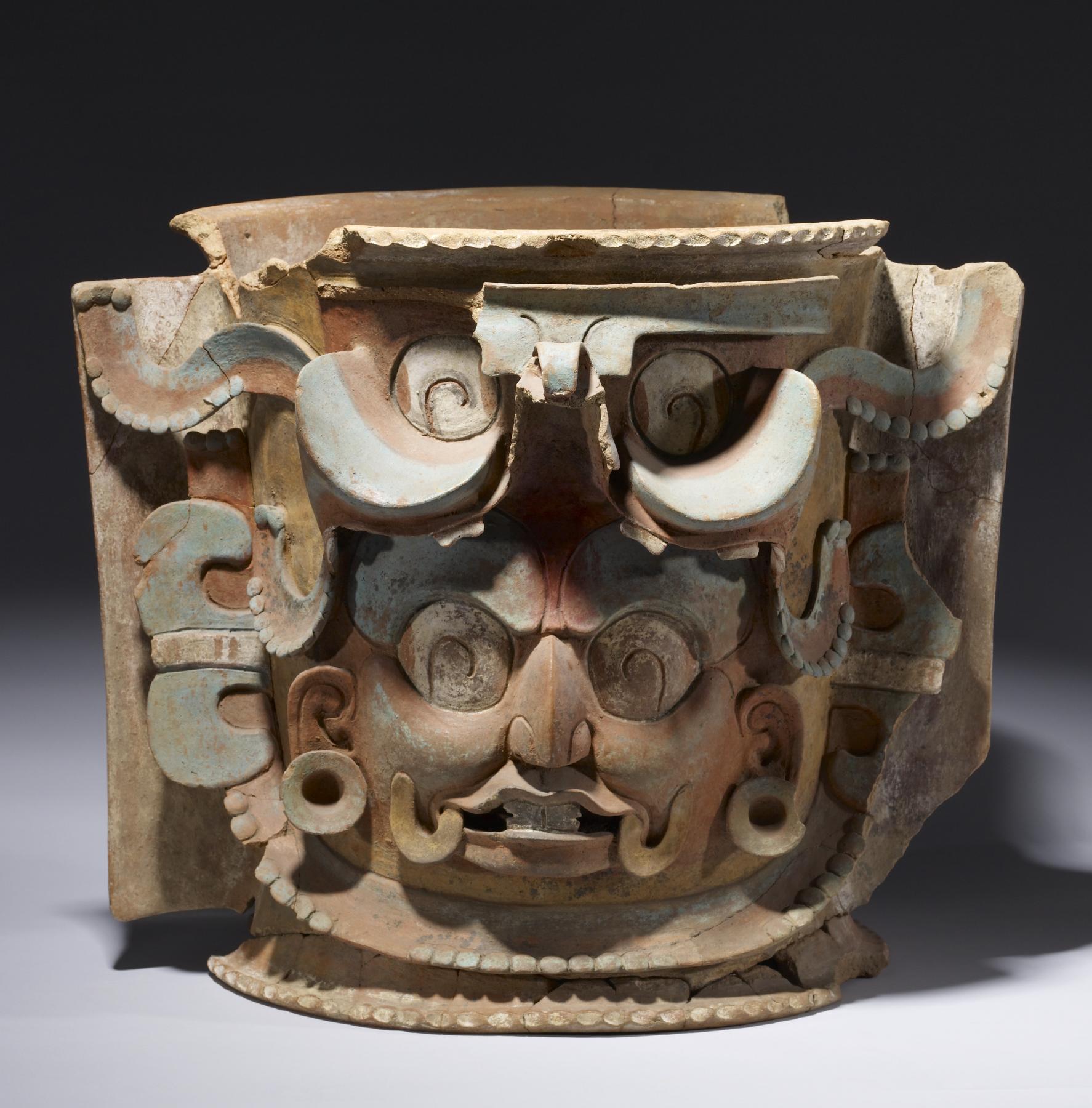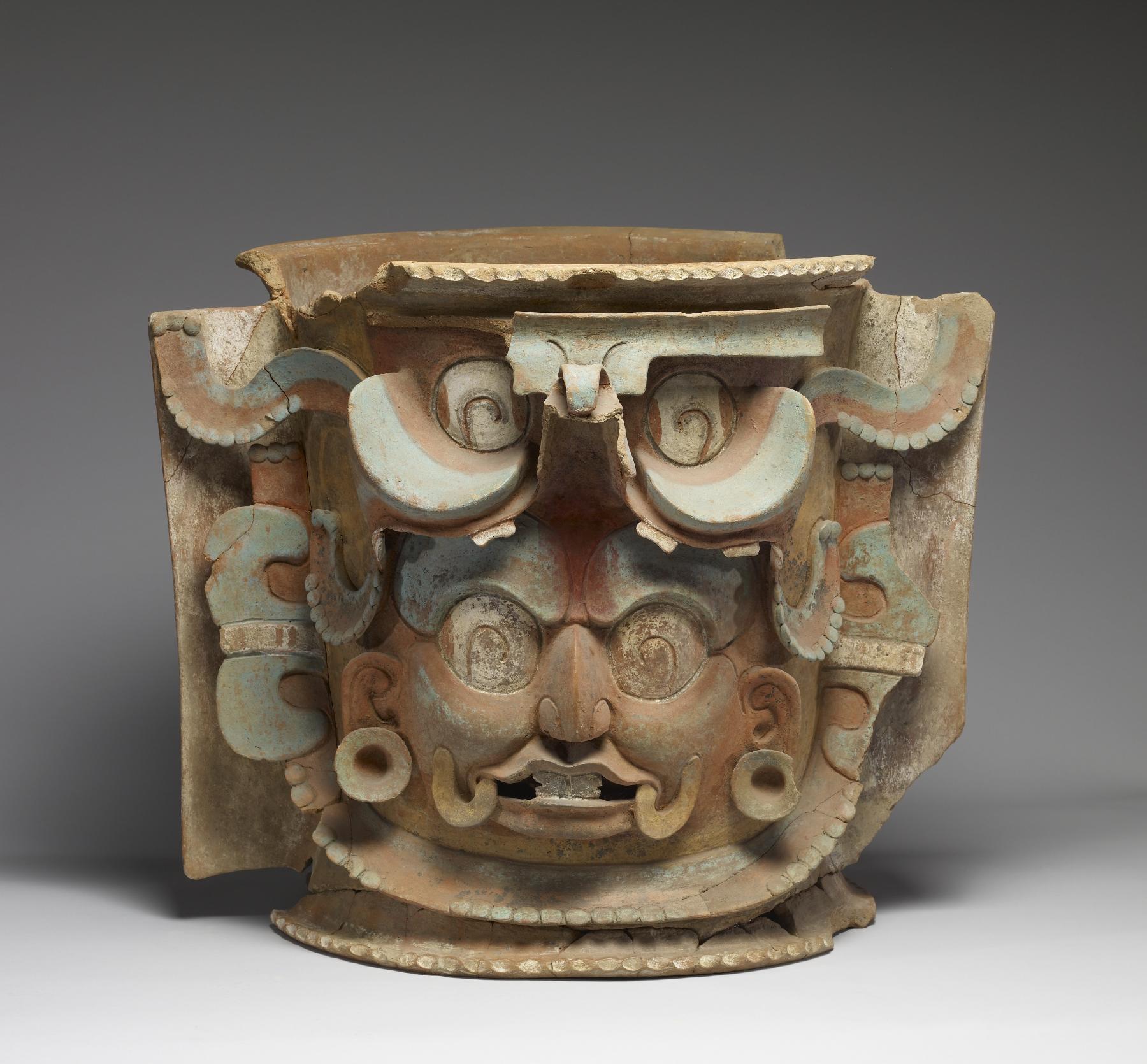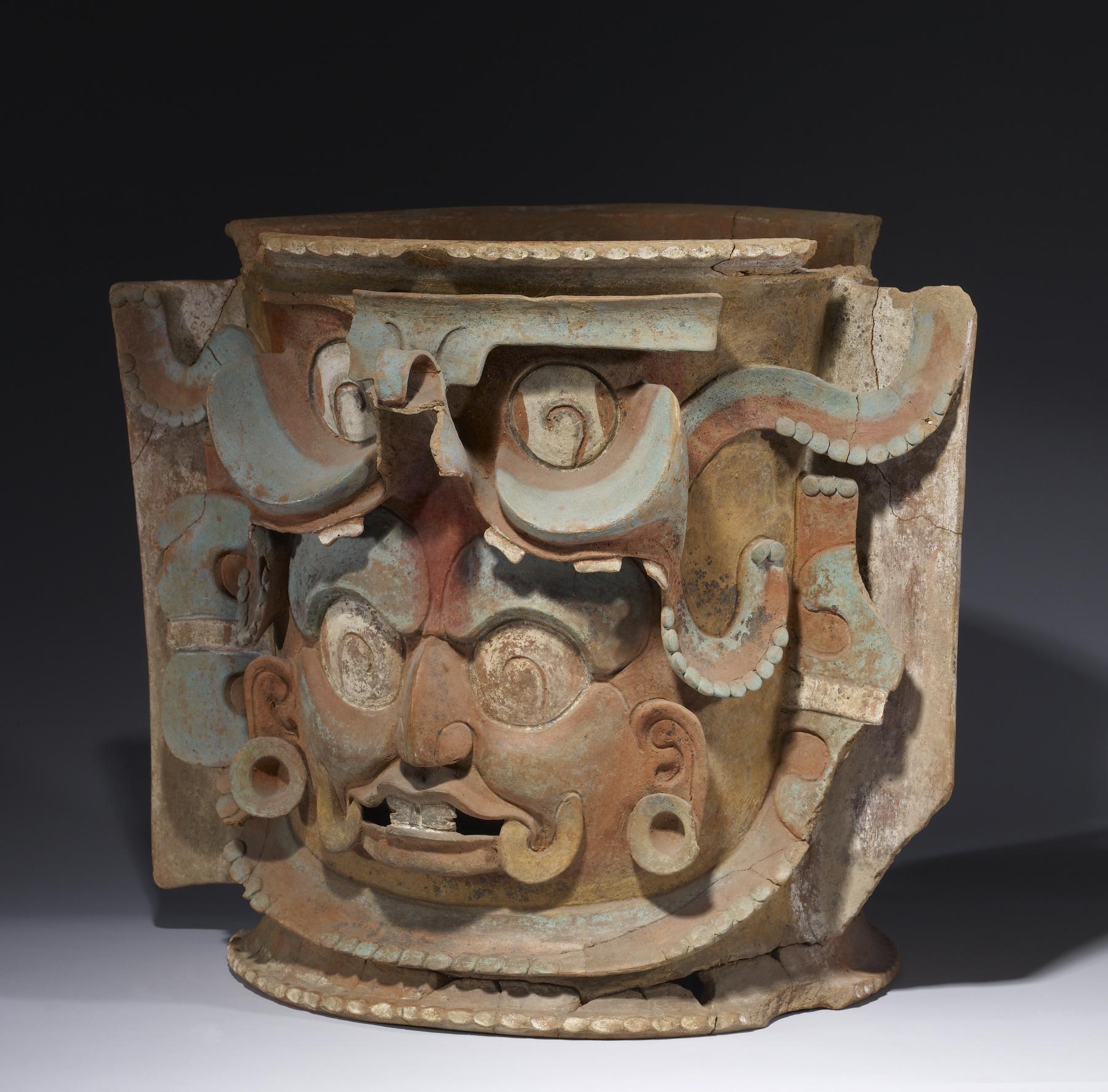Burial Urn
(Ancient Americas )
Large, lidded urns were unique to the K'iche' Maya of southern Guatemala. The urns contained the remains of important individuals who either were placed in the urn as a tightly wrapped bundle or as a secondary burial of the remaining bones. A few have reportedly been found buried in the pyramidal platforms of ritual buildings, but the majority come from sacred caves where descendants would make pilgrimages to give offerings and seek advice from their revered ancestors. The front of this urn is adorned with the image of what is likely an ancestor who, at death, was transformed into a spirit embodiment of a deity. This deity/ancestor combines features of K'inich Ajaw (the sun god) and GI, a patron god at Palenque, Mexico. He emerges from the open maw of the xoc (shark) saurian, which symbolizes the watery underworld, the deified personage ready to interact with his prayerful descendants. The special connection with the supernatural, and particularly with such deities as the maize god and K'inich Ajaw, was the ideological foundation of royal authority figures among the Maya, a Mesoamerican trait with its origins in the Formative Period among the Olmecs.
Provenance
Provenance (from the French provenir, 'to come from/forth') is the chronology of the ownership, custody, or location of a historical object.
Stendahl Galleries, Los Angeles [date and mode of acquisition unknown]; John G. Bourne, 1970s, by purchase; Walters Art Museum, 2009, by gift.
Exhibitions
| 2012-2013 | Exploring Art of the Ancient Americas: The John Bourne Collection Gift. The Walters Art Museum, Baltimore; Frist Center for the Visual Arts, Nashville. |
| 1998-2008 | Art of Ancient America, 1500 B.C.-1400 A.D.. Museum of New Mexico, Santa Fe. |
Conservation
| Date | Description | Narrative |
|---|---|---|
| 1/19/2012 | Treatment | stabilized |
Geographies
Guatemala, Southern Highlands (Place of Origin)
Measurements
H: 21 15/16 x W: 26 9/16 x D: 22 13/16 in. (55.8 x 67.4 x 57.9 cm)
Credit Line
Gift of John Bourne, 2009
Accession Number
In libraries, galleries, museums, and archives, an accession number is a unique identifier assigned to each object in the collection.
In libraries, galleries, museums, and archives, an accession number is a unique identifier assigned to each object in the collection.
2009.20.41






